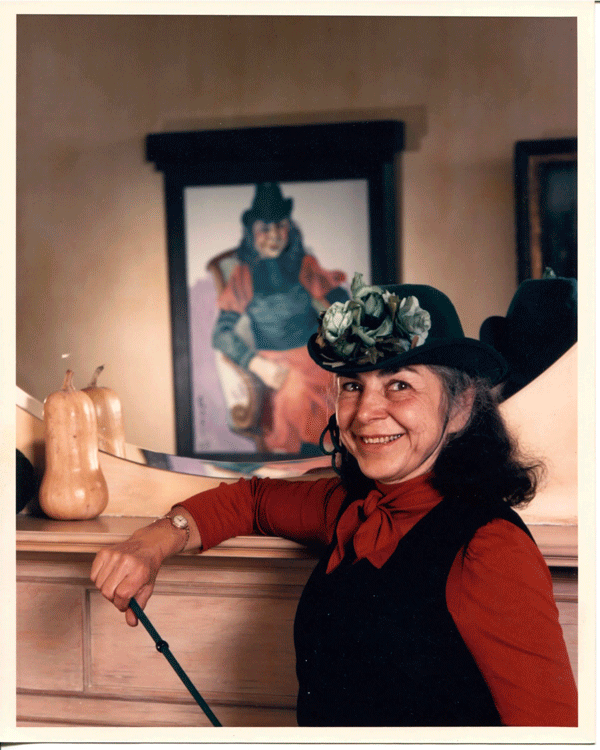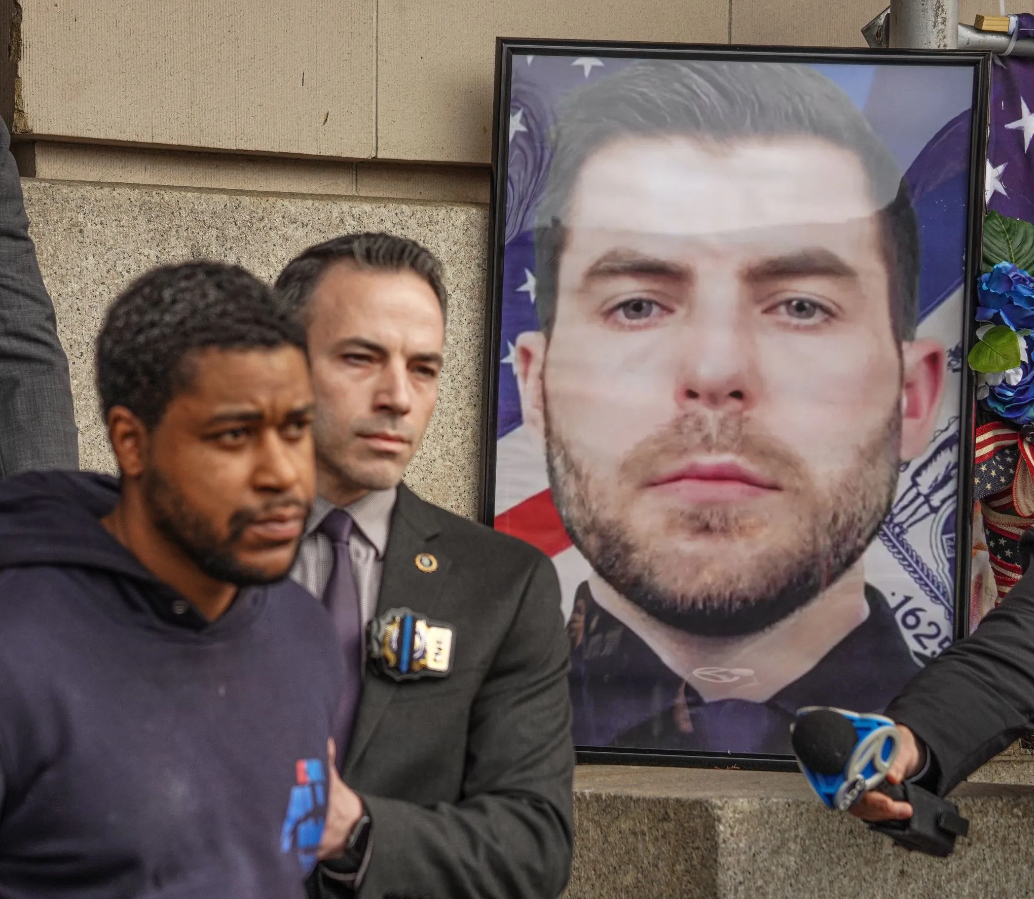BY MARY REINHOLZ | In her younger days, real estate heiress Vivien Leone lived large in glamorous surroundings, befriending writers, artists and intellectuals in New York and Rome. At times, she seemed to embody the spirit of la dolce vita.
But her last Manhattan apartment was a modestly appointed one on Patchin Place, that quaint 19th-century gated court in the West Village once considered home to literary figures like poet E.E. Cummings and journalist Djuna Barnes.
Shortly before her lease was up for renewal this spring, Leone — who by then was having trouble walking and suffering the effects of concussions after falling off her horse in years past — reportedly told a friend she would die if forced to leave her $4,000-a-month two-story rental.
Sure enough, the 84-year-old one-time reporter, feminist writer, editor and financial supporter of women’s art and poetry, expired April 6, two weeks after she was moved to a nursing home on the Upper West Side, according to her niece Claudia Ganz, an architect who lives on Morton St. and acted as the administrator of Leone’s estate.
“She couldn’t afford to stay in her apartment,” Ganz said. “She had to move to a nursing home. She wasn’t happy about it and she lived two weeks. She was completely broke.” Ganz couldn’t pinpoint the exact cause of her aunt’s demise but attributed it to natural causes.
Leone, who was divorced and had no children, did not make out a will. Ganz said she had no assets, in part, because of a “bad financial adviser.” But she noted Leone “never paid any attention to money.”
Cynthia Navaretta, director of Midmarch Arts Press, was a friend of Leone’s since the late 1960s and visited her at the nursing home a week before she died. She called her death a “terrible loss to all the women in the arts she helped. She gave money to anyone who asked for it and had a good reason,” Navaretta said. “She had passion and gave of herself freely.”

Navaretta said Leone supported a few women poets financially and gave the late Westbeth feminist artist Anita Steckel a “monthly stipend” for years. She claimed that Steckel, known for her sexually provocative paintings, sued Leone when she ended the financial arrangement.
Internationally known artist Suzanne Benton met Leone in the early 1970s, and the two women became friends. Benton, who lives in Connecticut, remembers Leone “giving me the key to her Gramercy Park place to stay when I was in New York.” Benton, a feminist, sold Leone about dozen of her pieces over the years, including two 6-inch bronze sculptures of Susan B. Anthony.
In 1998, Benton said, she created for Leone a locked 60-inch-tall wall sculpture to be opened on her 66th birthday. It contains personal items related to Leone’s life, including a photograph of Leone at her voice recital at Syracuse University where she was a music major, graduating in 1951. Last year, Benton said, Leone donated the locked-again sculpture, called “Secret Future Work, Number 1,” to a Queens College CUNY library.
Benton characterized Leone as “an unforgettable being. There was nothing boring about Vivien,” she said of her patron. “She was basically good company, very bright and always interesting. But she acted on whim. When she had an idea at the moment, she acted on it without thinking of the consequences.”
Benton and other friends said people took advantage of Leone.
The multimedia artist called Leone’s financial problems in her last years “shocking. She was literally without money,” Benton said.
Indeed, Fred Scheiman, Leone’s brother-in-law, said she was about to apply for Medicaid when she entered the nursing home. During a telephone conversation from his Columbus, Ohio, apartment, Scheiman claimed his sister-in-law “pissed away” the fortune she inherited from her late parents’ New Jersey real estate business, D. Leone, Inc. He contended she spent $2 million on three renovations of her rented penthouse atop the Gramercy Park Hotel. Leone had lived at the hotel from the late 1970s until she relocated to Patchin Place about 10 years ago.
One pricey renovation of the penthouse by Clodagh, the Downtown Irish designer, was written up as a 1989 cover spread in The New York Times’ Home section. The paper described Leone’s redecorated two-bedroom apartment a “tribute to women” and “one of the most idiosyncratic and personal interiors in the city.”
Much the same could be said about Leone in her heyday when she threw lavish parties called “saloons” at the penthouse, and commissioned a 1983 portrait of herself by famed feminist painter Alice Neel, who charged her $20,000, as noted by Leone in her 1988 “Story of A Portrait,” published as a keepsake book of less than 20 pages.
“A great painting is to belong to one’s time in a way that is like no other,” she wrote. “It pleases me to add to Whitman’s, ‘I was the man, I suffer’d, I was there,’ a different refrain: I was the woman, I celebrated, I too was there.”
On July 24, Christie’s on Rockefeller Plaza will hold a sale to auction off the painting. Its estimated starting price was listed online as between $120,000 to $180,000.
Leone’s generosity was legendary among her friends. Westbeth playwright Delores Walker, who first met Leone in 1970, said she asked Leone if she could hold her 1991 wedding to Kenneth Milford at the Gramercy penthouse “and she kindly agreed.” Walker recalled that the terrace “was like being on a ship with all these railings. There were wonderful views.” Inside, she said, “There was the Neely painting, a row of Vivien’s hats and all these books she had collected” from Aphra magazine for her library, called Lioness Books.
Leone was a poetry editor at Aphra, believed to be the first feminist literary journal, publishing writers like Erica Jong, Kate Millett and Rita Mae Brown from 1969 to 1976.
Leone “spent a lot of money” funding Aphra when the magazine began, Walker said. She remembered her friend as “very individualistic. She did not want to be pigeonholed or ignored,” Walker said. “She spoke her mind. If you don’t have to work, you don’t have to temper that. She loved taking risks and supported many causes. She would not limit herself to being called just a feminist or just an editor. She wanted to be Vivien Leone, fully herself and fully independent.”
Staten Island author and small press publisher Malachi McCormick said he became friends with Leone in the mid-1980s. He recalled being a frequent caller at her penthouse bashes in Gramercy, joining her at expensive lunches where there would be “buckets of champagne,” and riding up to the Bread and Puppet Theater in Vermont in her Cadillac convertible with Walker and Milford.
When McCormick and Leone went out for a meal, McCormick said, “Vivien automatically reached for the check.” He noted that when he paid, “She said she appreciated it because few people she knew did that.” He acknowledged Leone could be quirky, but added, “We could do with a lot more quirk and there was substance behind the quirkiness.”
Leone was born Sept. 3, 1929, in Weehawken, N.J., the third daughter of an Italian immigrant father who worked for a time as a hatter on the Lower East Side, and an immigrant Russian Jewish mother. Her late parents went on to build a real estate empire — first managing buildings and then selling them throughout New Jersey. Ganz said Leone grew up “in a mansion” in Fort Lee on the Palisades.
Leone, who spoke fluent Italian, lived and worked in Rome for several years and married Italian mime Carlo Mazzone Clemente, a Venetian, in 1956. The couple soon returned to the U.S. They were divorced in 1966.
There was no formal death notice printed about Leone’s passing beyond two paragraphs in a blog written by Jacqueline Ceballos, past president of the New York City chapter of NOW (National Organization for Women) and the Veteran Feminists of America. Ceballos lauded Leone for her contributions to the “early movement” of second-wave feminism.
Feminist author and activist Susan Brownmiller, who organized a widely reported 1970 demonstration at the Ladies’ Home Journal offices, recalled Leone’s presence at the sit-in and later reading Leone’s account of it.
“I knew her and she wrote an interesting piece for a women’s newspaper,” Brownmiller said in a telephone interview. “It was charming and very insightful. She was somebody with a talent for writing and with very original ideas. But nothing came to fruition.”
Leone held a number of jobs in broadcasting and publishing after she graduated from college, including a two-year stint in publicity at WMCA when she was trying to break into radio. She had a reporting gig in Rome for International News Service and spent three years writing short photo pieces for Photoplay in New York. She also contributed essays to the Village Voice, The Progressive and Off Our Backs. She’s listed in the 2006 directory “Feminists Who Changed America, 1963-1975,” edited by Barbara J. Love.
Although Leone’s brother-in-law Scheiman called Leone’s Patchin Place digs “a hole in the wall,” and said three of her scooters had been stolen outside her doors, several friends said she was happy in her last apartment and reveled in the neighborhood’s literary history.
“She loved it there,” said her former live-in caretaker Frank Garcia in an e-mail.
Leone would be “looking out the windows every day as the world passed her by with tourists coming from all over to see Patchin Place,” he recalled. “She loved, in her own way, the people in her life and had a strong liking for dogs and horses. Before she vacated her apartment, she gave me some art that would remind me of her to put up in my place. When I walk into my house, the first thing I see is the [picture] of the six hounds, all with Italian names, that she had put up above her bed.”
Besides Claudia Ganz and Fred Scheiman, Leone’s survivors include a nephew, Jeffrey Scheiman, of Toledo, Ohio. Ganz said her aunt’s body was cremated at the Greenwich Village Funeral Home, at 199 Bleecker St., and her ashes “scattered to the sea.” She said that people who wanted to honor her memory might consider making donations to poetry foundations or to shelters for dogs and horses.
Reinholz met Vivien Leone in the 1970s while covering the women’s liberation movement as a columnist for the New York Daily News’ Sunday magazine.

















